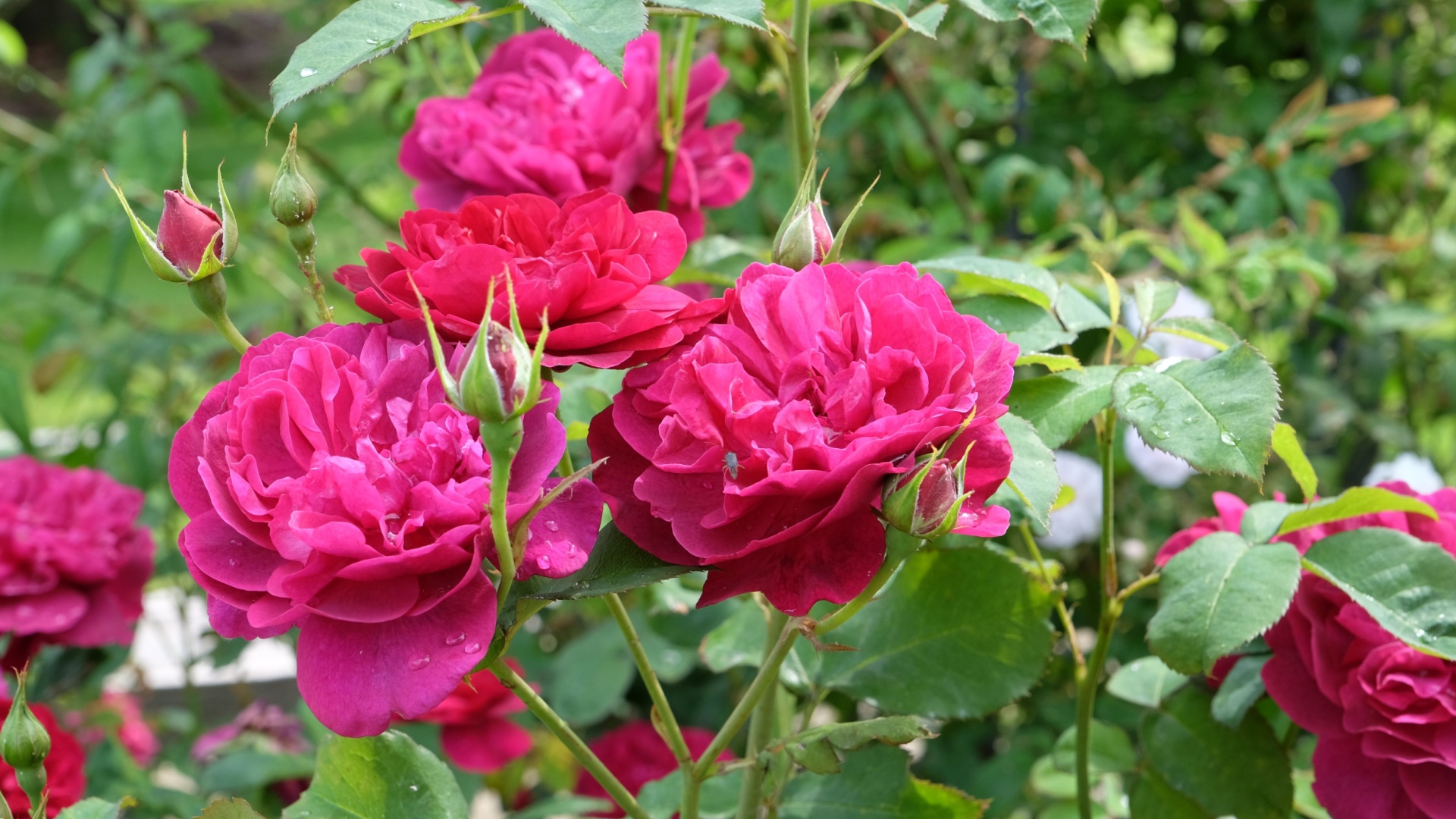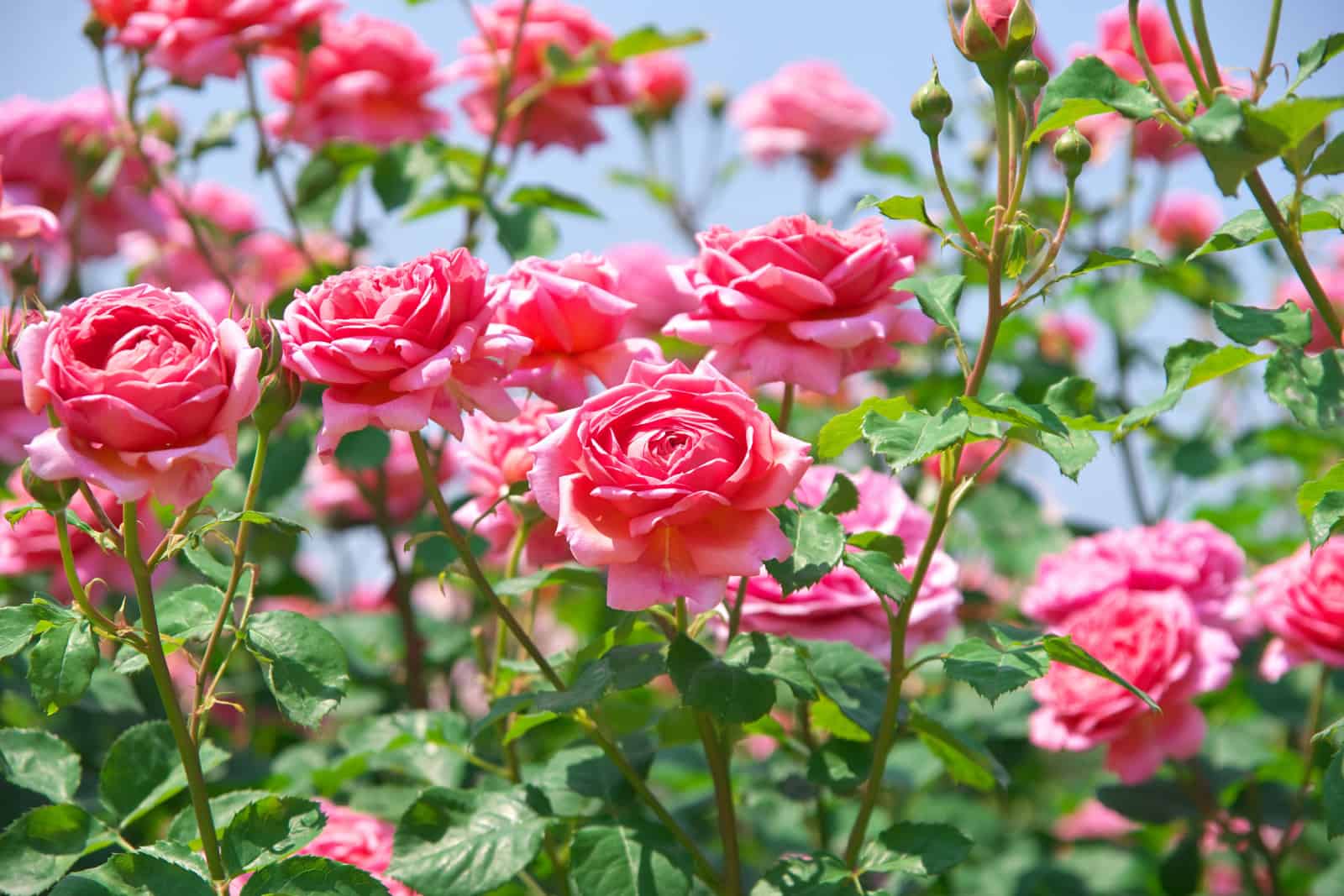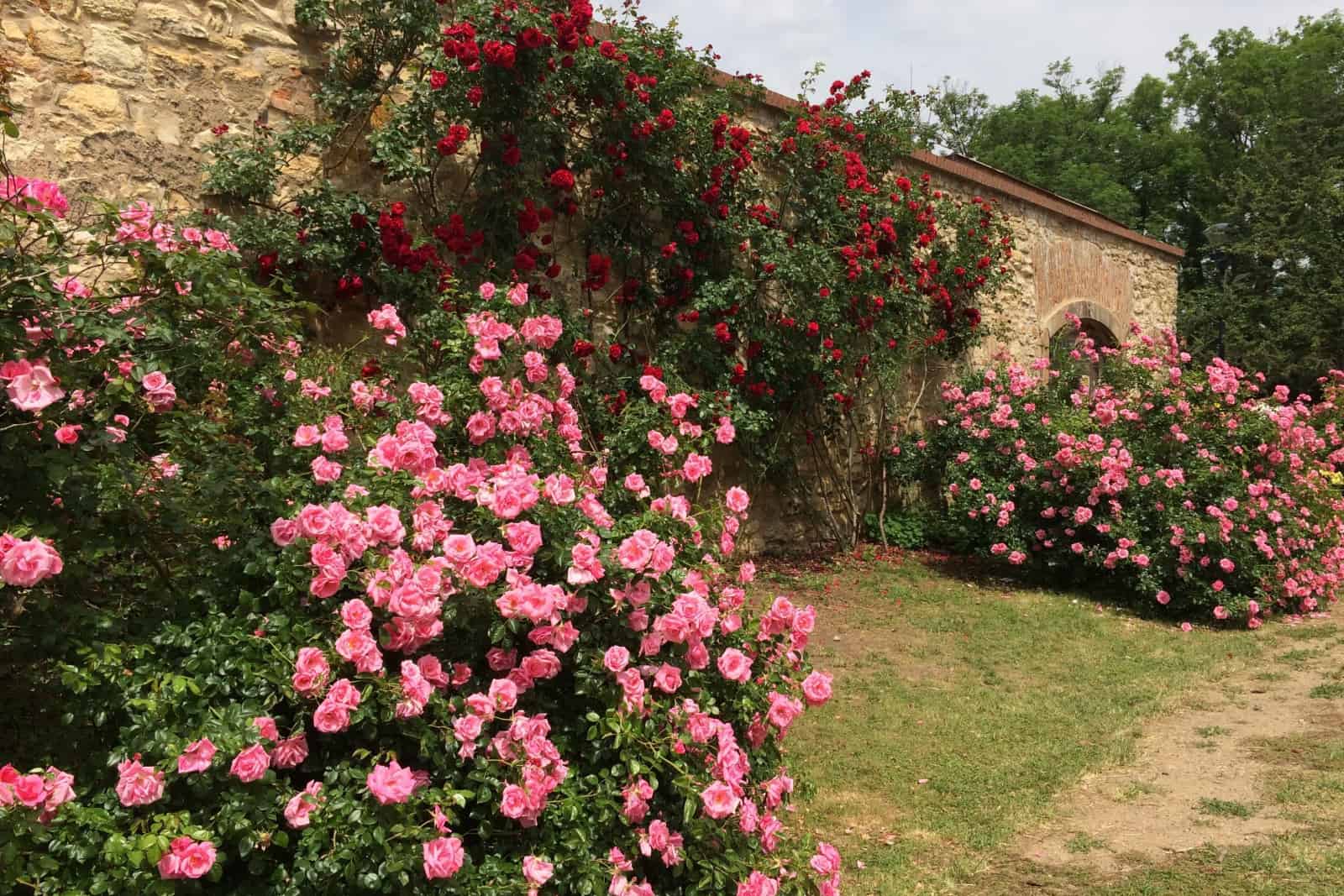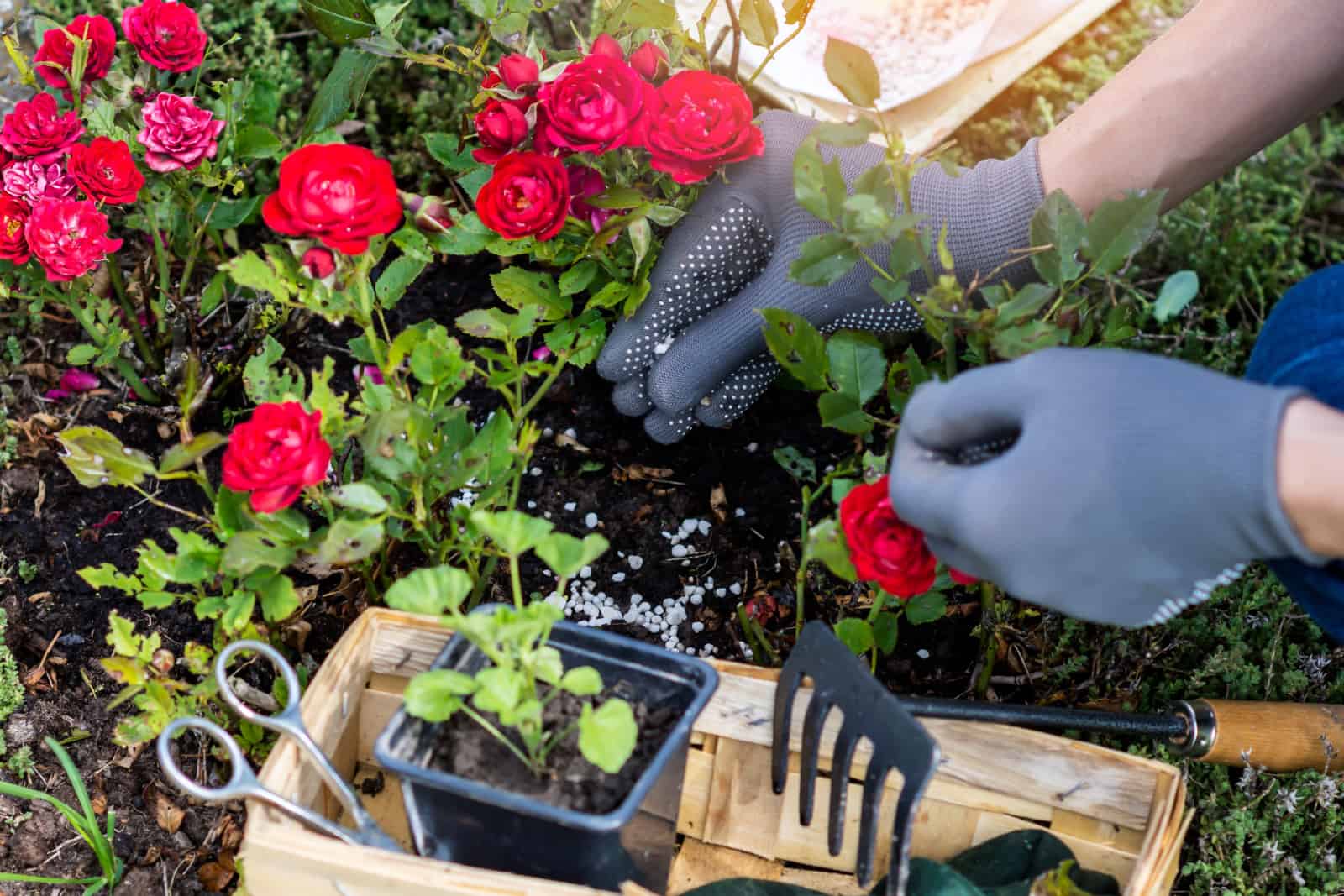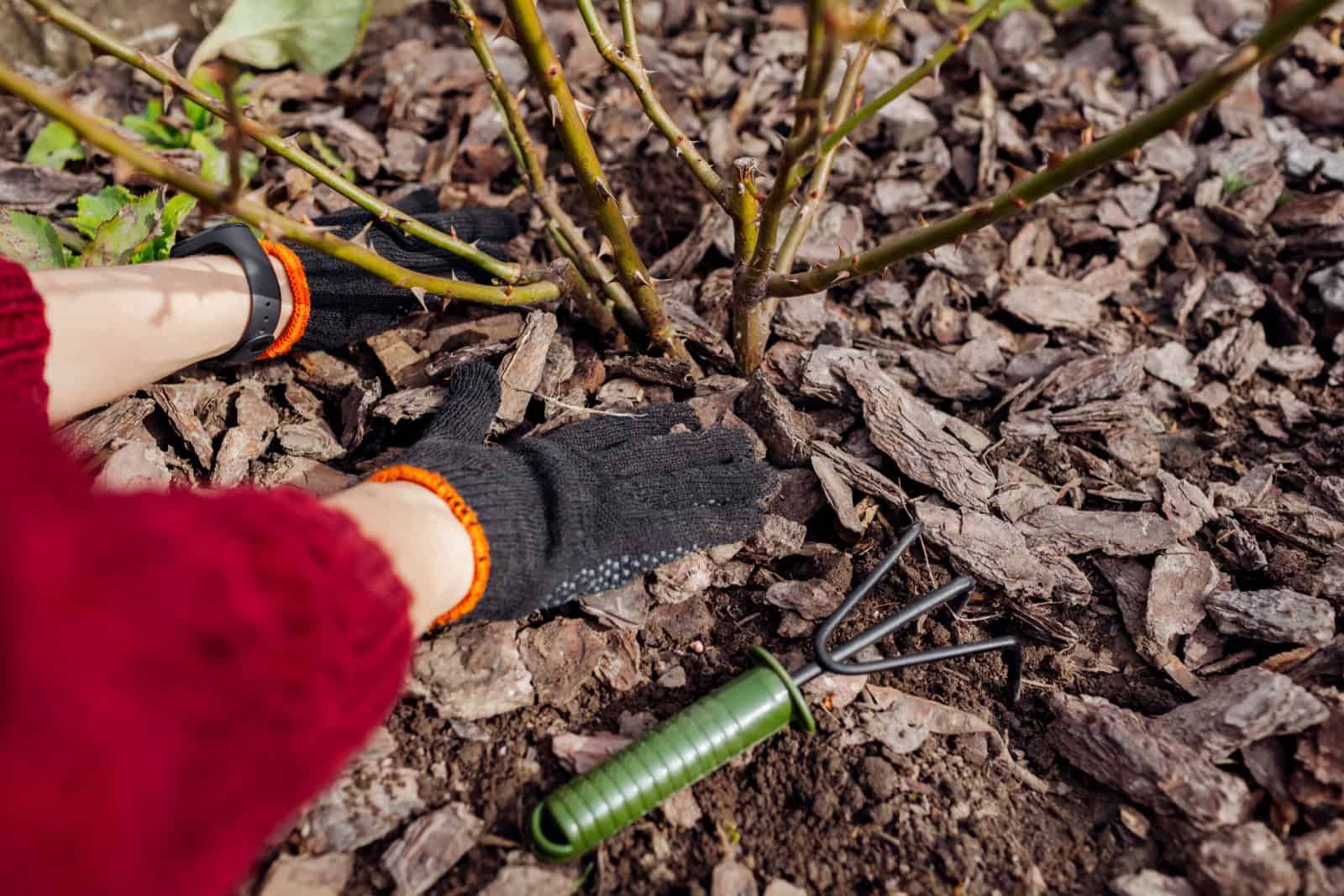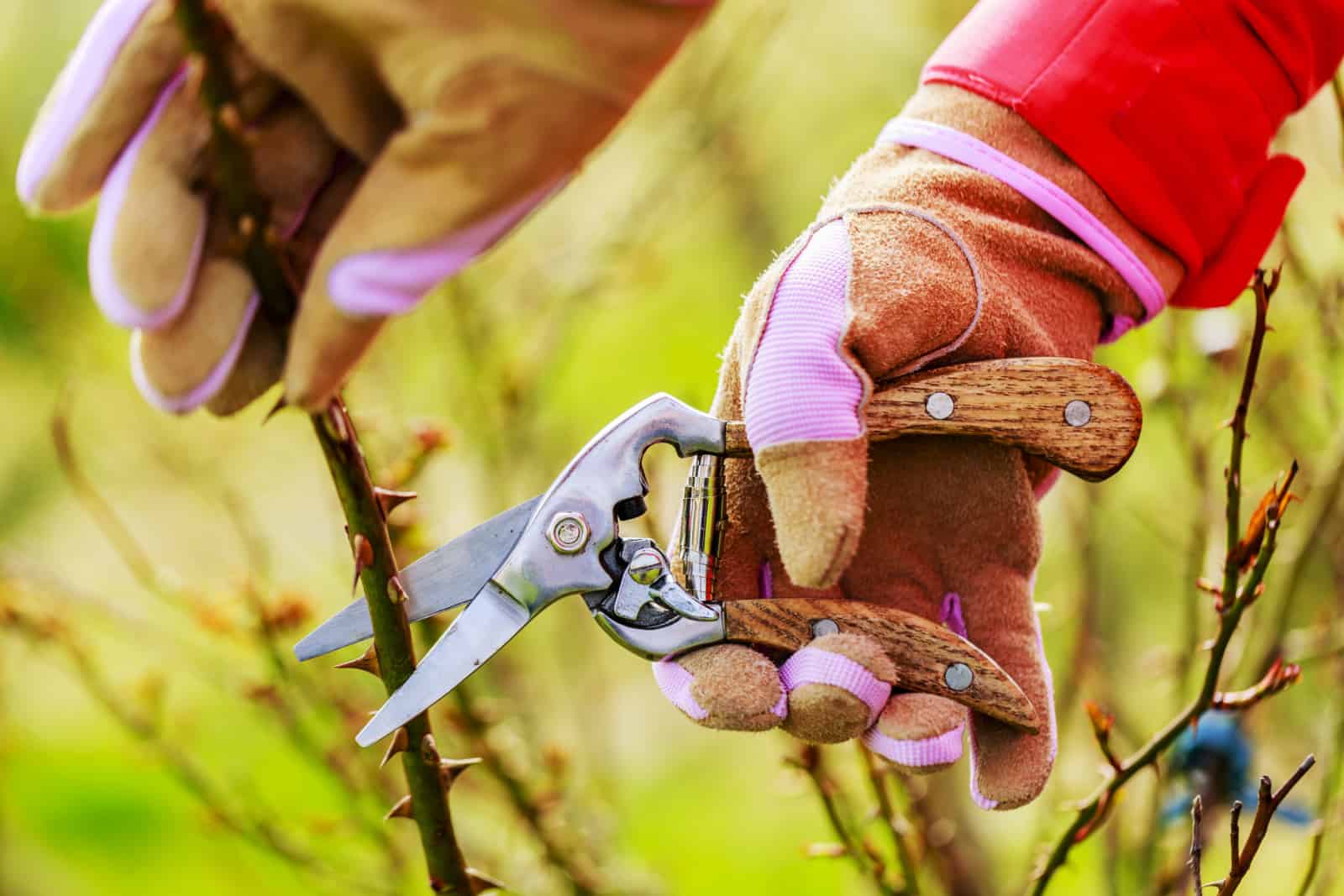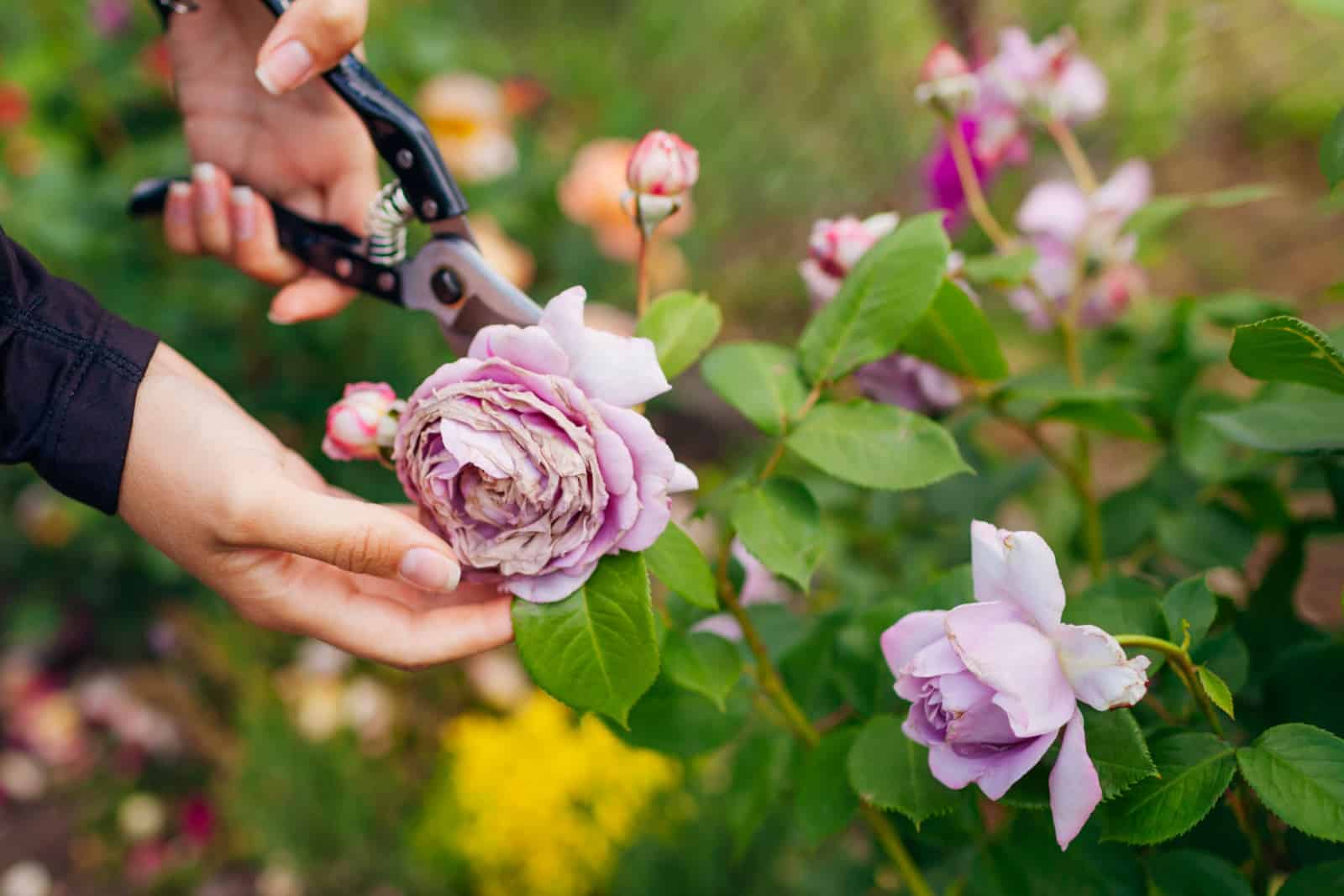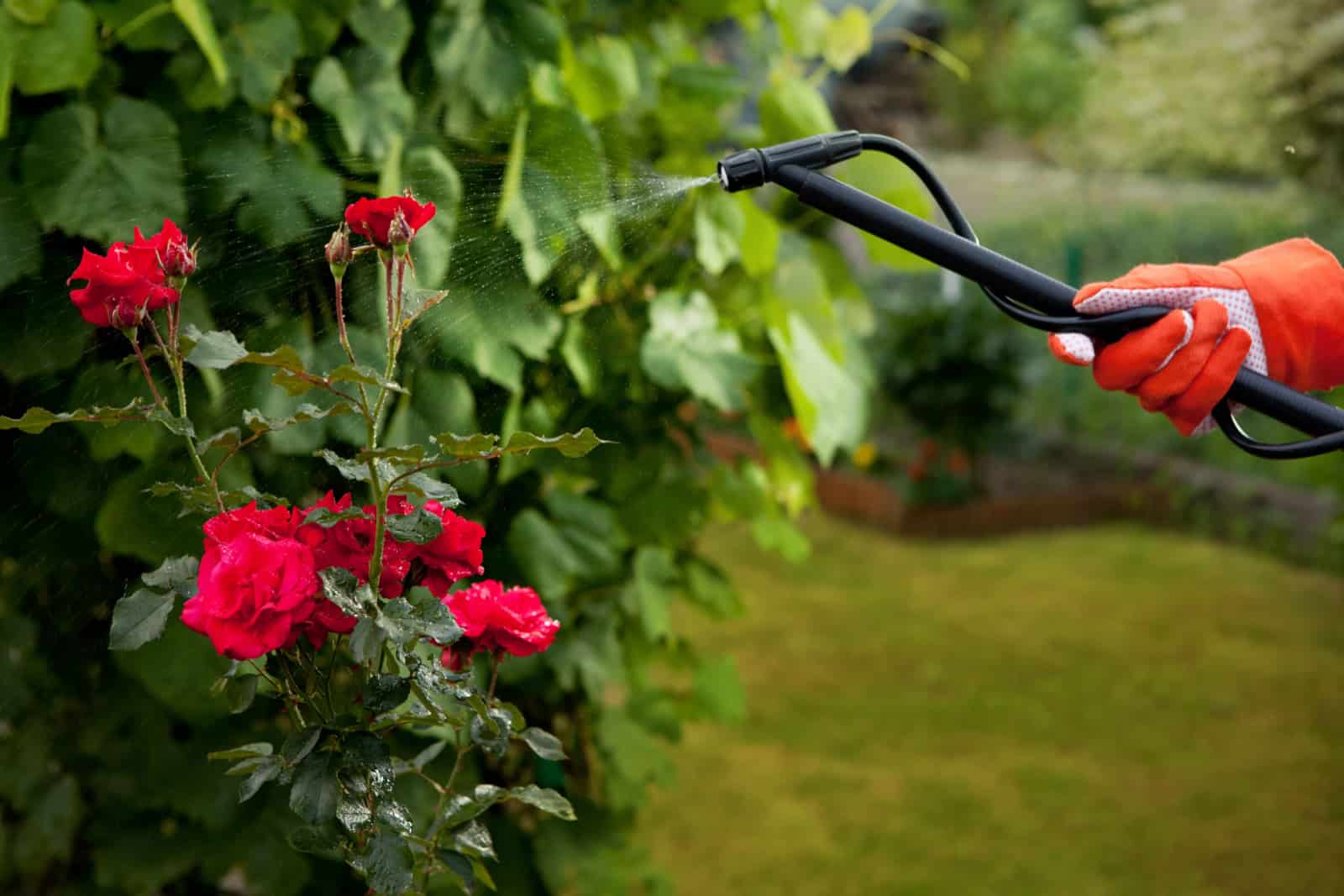For all the gardening enthusiasts and rose parents out there, I know how tricky it can be to get an abundance of fragrant and vibrant rose blooms.
As someone who has grown roses for a long time, I tried many, many techniques before I found the ones that actually work.
Now I want to share these techniques with you and help you get more rose blooms to transform your garden into a symphony of colors and fragrances!
1. Choose The Best Variety
It would be great if you could just select a variety and get an abundance of rose blossoms. Unfortunately, that’s not how it works. Several factors determine the outcome of the blooming season.
Let’s learn how to choose the perfect rose variety for your area!
Rose Hardiness
Every plant has a different temperature tolerance but roses are especially sensitive.
Always check the recommended hardiness zones when choosing a rose variety for your garden. For instance, if you live in USDA hardiness zones 10 and above, some of the varieties to grow include Don Juan, Louis Philippe, and Candy Cane.
For colder climates, more suitable varieties include Eden Climber and Black Cherry.
Size And Space
Imagine a garden so large that every rose species could fit in it! Since this is impossible, we need to take into account the space available and the expected size of specific rose varieties.
If you are lucky enough to have a lot of space in your garden, then climbers are an excellent choice.
On the other hand, if you don’t have much space or you need roses for a container garden, then compact varieties are more suitable.
Flowering Type
Some rose varieties are prized for their prolific blooming habits, which is why it’s so important to do research before you buy any plants or seeds.
I highly recommend floribunda and hybrid tea roses because these varieties are specifically bred for an abundance of blossoms and continuous blooming.
Repeat Bloomers
A garden full of rose blooms throughout the entire growing season is only possible if you cultivate repeat bloomer varieties.
Some of the best repeat bloomer types include Ingrid Bergman, Just Joey, and Golden Beauty.
On the other hand, there are roses, such as the Damask or gallica varieties, that display all their blossoms at once.
Disease And Pest Resistance
Pests and diseases pose a threat to every plant’s health, so when choosing a rose variety for your garden, go with ones that are labeled as pest- and disease-resistant.
2. Meet Roses’ Growing Requirements
Growing roses isn’t an easy task but if you meet all the requirements, there’s no reason why you won’t get an abundance of blossoms.
Here are some top tips for rose care!
Light Exposure
Light plays a major role in rose growth and if there isn’t enough sunlight, the number of rose blooms will significantly decrease.
To enhance blossoming, find a spot that will receive at least 6 hours of full sun each day.
Spacing
It’s important to ensure enough space between each rose plant so every rose will receive enough sunlight. It will also encourage it to bloom and produce many blossoms.
Soil Type
Another essential factor in rose plant care is the soil type. It must be porous, free-draining, rich in nutrients, and slightly acidic with a pH ranging from 6.0 to 6.5
3. Water On Time
Watering is often the most challenging part of plant care for many growers.
When it comes to roses, there’s a difference between watering juvenile and mature plants. For instance, you’ll need to add water approximately 3-4 times a week if your roses are newly planted.
On the other hand, if they’re fully established, they’ll most likely only need watering once a week. Of course, environmental factors such as temperature and humidity can change rose watering needs.
An excellent technique that helped my roses produce more blossoms is leaving their soil to dry out a little bit to trigger bud production.
As soon as new buds appear, give your roses a good soak to encourage blossoming.
4. Fertilize
Roses need additional nutrients during the growing season to produce more blossoms.
Here’s what you need to do to make sure they get them.
Feed On Time
The first fertilization should be in early spring to promote vegetative growth. During this time, your roses will need a lot of Nitrogen.
Fertilization continues during the blooming season, but Phosphorus is the key mineral during this period.
These lovely plants don’t require feeding at the end of their season. This will do more harm than good because any new growth can’t survive winter.
Pay Attention To NPK Ratio
You’ve seen that roses need Nitrogen and Phosphorus for growth and blooming, and Potassium is the third essential macronutrient for roses. It strengthens their tissue.
Compost or fertilizer with an NPK ratio of 5-1-2 will provide your roses with enough Nitrogen. During the blooming season, you can use fertilizers with an NPK of 6-9-6.
Other Growth Boosters
1. Coffee grounds: You can use coffee grounds for your roses as an organic way to promote vegetative growth.
2. Alfalfa: This plant food will help your roses uptake more nutrients from the soil.
3. Epsom salt: Used for boosting magnesium levels in the soil, which will promote blooming.
4. Foliar sprays: You can make tea from manure and use it as a leaf spray on your roses. Alternatively, use store-bought products; both will promote the health of your roses.
5. Eggshells: Roses love calcium, so instead of throwing your eggshells out, use them to boost calcium levels in rose soil.
5. Mulch
Your roses will benefit from mulching in many ways. First, it will help the soil conserve moisture so your roses are less likely to dehydrate.
Second, it will suppress weed growth, and we all know how hard it can be to remove weeds.
Third, this method will regulate soil temperature and protect the roses from freezing.
Another benefit of mulching your roses is that mulch will break down and boost the nutrient levels in the soil.
Compost, leaf mulch, and well-rotted manure are excellent options as mulch for rose plants.
6. Prune
If you already have roses in your garden, you know that you should never skip pruning.
So, for all of you who are just starting to grow these plants, be prepared to prune a lot!
Here’s a little more info on the subject.
Prune On Time
Old roses typically bloom in the middle of spring. Since these varieties bloom only once during the growing season, wait until the rose blooming cycle ends before pruning.
This will make the bushes more attractive and prepare your roses for the next flowering season.
On the other hand, you should start pruning roses that flower on new wood at the end of the winter or in early spring.
Clean The Pruning Tools
There’s one thing many growers forget when pruning, which is cleaning the tools. Since tools can transmit diseases or carry pests, you must sterilize them with bleach or alcohol before using them.
One more thing, if you cut off a diseased section of your roses, never add it to your compost pile because it can contaminate it.
Where To Prune
Your goal is to allow sunlight to reach the buds that are about to open, so don’t cut more than an inch above the bud eye which faces outward.
7. Deadhead
This technique encourages all flowering plants to generate more blossoms.
Select a section of rose placed above the leaves that contains more than 5 leaflets. Mature roses benefit from this kind of pruning.
When it comes to juvenile branches, deadheading might not be the best idea because they’re still weak and can’t produce a lot of blossoms.
8. Control Pests And Diseases
Preventing and controlling pests and diseases in your roses ensures healthy development and an abundance of blooms.
Some of the best techniques for pest and disease prevention are mulching and companion planting.
If you mulch, you don’t need to water too often, which means less water on the foliage. Since pathogens are less likely to infect dry leaves, this is an excellent disease control method.
Companion planting will help you protect your roses from pests. Some of the best companions for roses include alyssum, lavender, and marigolds.
By using these 8 tips and tricks, rose blooms will fill your garden and you’ll have the magnificent garden display every grower wishes for!
Until next time.

